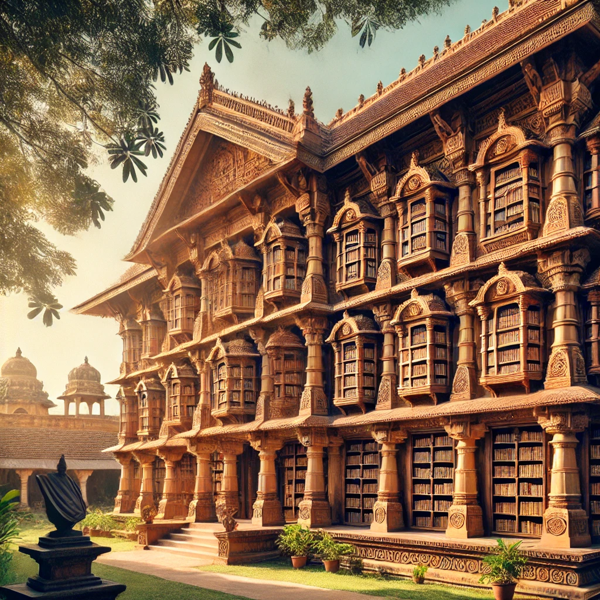Thanjavur, a historic city in Tamil Nadu, is home to the Maratha Palace, an important architectural landmark. From 1535 to 1674, the Nayak rulers governed their kingdom from this very palace. The Nayak dynasty played a crucial role in resisting foreign invasions in South India. During their reign, Thanjavur flourished not only militarily but also became a hub of literature and culture. In their pursuit of preserving ancient literature, they established a library — which today is known as the Saraswathi Mahal Library, one of the oldest surviving libraries in India.
Locally, this library is also referred to as the Maharaja Serfoji’s Library. Although Serfoji was not a Nayak ruler, he belonged to the Maratha dynasty. In 1675, the Maratha emperors took control of Thanjavur, but the efforts to preserve literature did not stop. In fact, under Maharaja Serfoji II, the library was further enriched. Serfoji was a philosopher, humanist, and Sanskrit scholar. He collected rare Sanskrit manuscripts and expanded the library with books in Tamil, Telugu, Marathi, and English.
The library once housed one of the world’s oldest atlases and a printed Tamil Bible. The Bible was stolen in 2005 but was later recovered from a museum in London.
Although libraries were built in various parts of India long before the Nayak rule, most of them have been lost to time. However, the Saraswathi Mahal Library has survived for nearly 500 years. Today, it houses approximately 49,000 manuscripts, including 39,000 in Sanskrit, 3,500 in Tamil, and 3,000 in Marathi. Among its treasures are ancient manuscripts by Sri Ramdas and Dattatreya.
During the British era, the library was temporarily closed in the late 18th century, but it was reopened to the public in 1918. After India gained independence, the Government of India took over the maintenance of the library and the Maratha Palace. This ancient archive is not only a treasure of Tamil Nadu but a source of national pride for the entire country.

